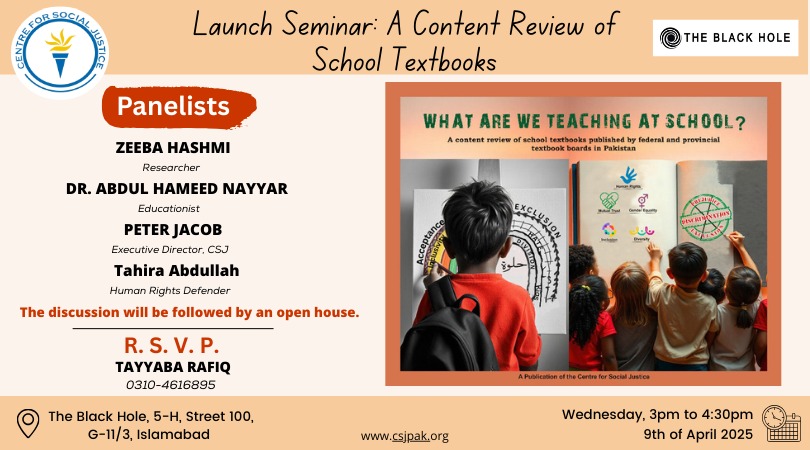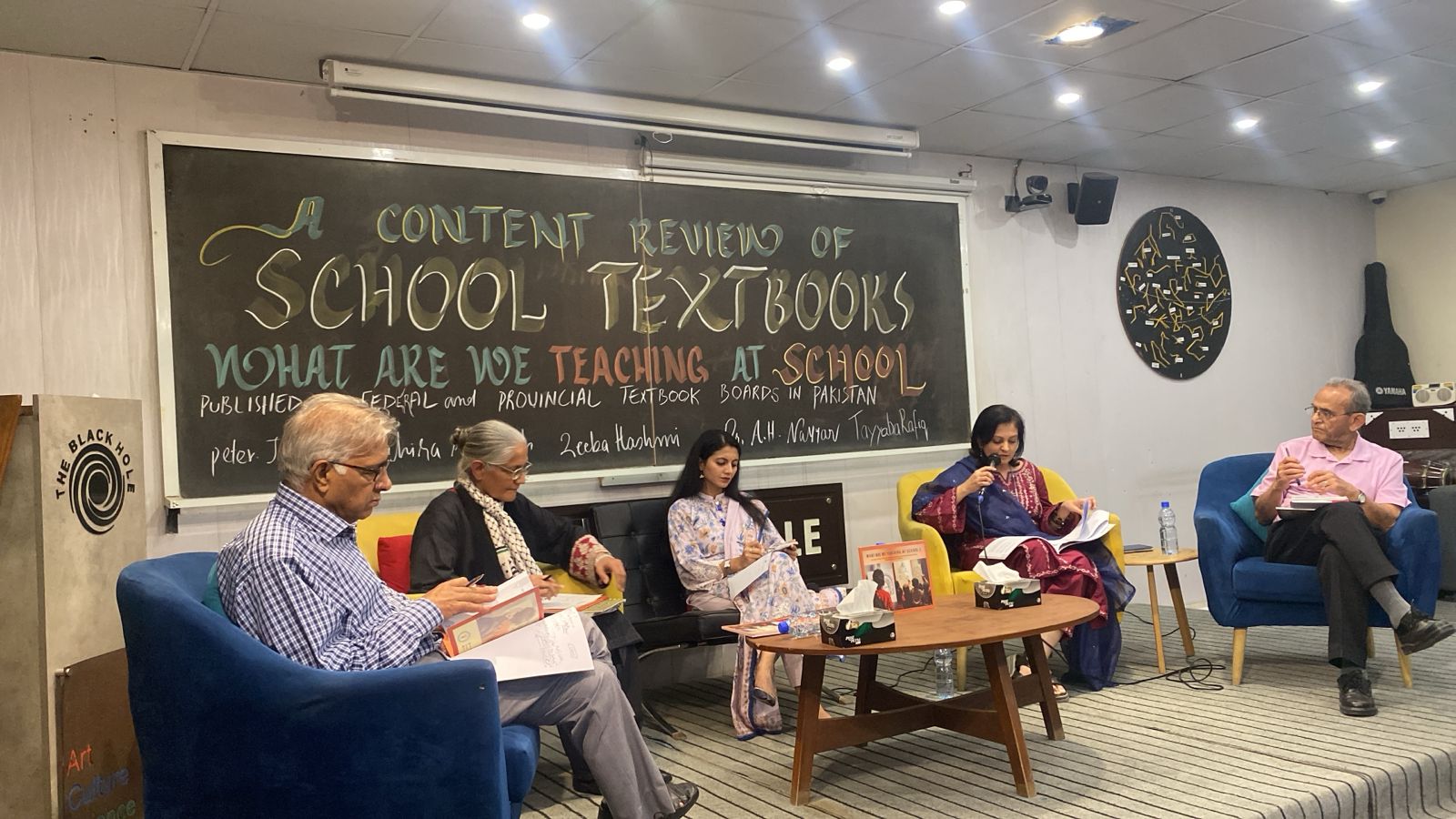Islamabad, Pakistan: The Centre for Social Justice (CSJ) held a launching seminar on its new publication, which reveals that while some progress has been made in reducing hateful content against religious minorities, the religious material belonging to the majority religion in compulsory non-religious subjects has increased. The review asserts that this content encourages moral absolutism of a single faith, contributing to intolerance currently prevailing in the country. Moreover, this shift, in violation of Article 22(1) of the constitution of Pakistan, brings education close to madrassa education.

The speakers at the launch seminar emphasized the urgent need for incorporating an inclusive approach to address the majoritarian and supremacist mindset plaguing society. The speakers drew a direct link between exclusionary narratives in textbooks and rising social intolerance against religious and sectarian minorities.
While some positive content, such as references to minority religions and festivals, had been included, it had remained insufficient to subside the effect of the overall exclusionary approach. The incorporation of religious themes in science, social studies, and language textbooks reduced the scope for critical thinking and democratic values in students.
Zeeba Hashmi stated, “This study brings fresh evidence on what experts have been pointing towards for years, goes even before the commencement of the Single National Curriculum, now called National Curriculum Pakistan. Indoctrinating young minds through textbooks with divisive political narratives where the use of religion becomes a convenient tool limits the scope for argumentative thinking and critical analysis, which are required for any healthy democratic orientation in our younger generation. This study should also help readers understand what hate speech is and whether its definition is context-dependent. It is time the government learns from its lessons of creating divisions in the name of imposing the state’s singular views in the name of ‘unity.’ This will create further disharmony and alienation.”

Dr. A. H. Nayyar said that the advanced countries recognized long ago that forcing religious education on school students is counterproductive. It deepens societal divisions, alienates students of other faiths, and prioritizes belief over inquiry, hindering critical thinking and learning. For these reasons, such nations have avoided making a single dominant faith a compulsory part of their school curricula. Pakistan, however, has taken the opposite approach. Its curriculum is heavily laden with compulsory religious instruction, and the consequences are evident. The nation remains deeply divided along religious lines, and students from minority faiths often feel excluded from the mainstream. This approach hinders students’ ability to compete globally, contributing to Pakistan’s continued decline in international educational and development rankings.
Participants expressed concern over the use of derogatory terminology like “low caste” and “Hindus’ mentality,” particularly in Punjab textbooks
Peter Jacob presented the findings of the study. He highlighted that the percentage of religiously inclusive content remained low across the board, with Khyber Pakhtunkhwa and the National Book Foundation leading at just 7.0%, followed by Sindh (6.4%), Balochistan (5.4%), and Punjab (5.2%). He noted that a high presence of Islamic content in non-religious subjects, especially in Pakistan Studies and Urdu, undermines the constitutional right to religious freedom for minority students. He also expressed deep concern over the use of derogatory terminology like “low caste” and “Hindus’ mentality,” particularly in Punjab textbooks, and a heavy representation of places of worship in textbook imagery, where 66% of visuals depicted mosques while only 1.8% represented churches or temples. “There is a dire need to introduce more learning content manifesting sensitivity towards diverse religions, peace-building, acceptance and tolerance,” he added.
Tahira Abdullah appreciated CSJ’s latest research publication highlighting continuing problems in the public education system’s SNC (especially the current textbooks) – despite some positive efforts at inclusion. She commended CSJ’s consistent efforts, spread over the past decade and a half, to research and present concrete evidence, with data and statistics – for the State to acknowledge, and for civil society stakeholders to use in advocacy for change.
Making recommendations to all textbook and curriculum boards in the country, the study urged to include structural inclusion of religiously inclusive curricula, learning and teaching tools, honoring the promise of integration of the religious education into the school curriculum for minority students, peace as a priority (introduction of lessons on human rights and peace from primary to higher secondary level), normative parity (inclusion of religious neutral content, also making the Quaid-e-Azam’s August 11, 1947 speech to the country’s first constitutional assembly), part of textbooks and the constitution.
This new study was conducted five years after CSJ’s research publication, Quality Education Vs. Fanatic Literacy (2020), which examined textbooks developed under the 2006 National Curriculum, etc.
